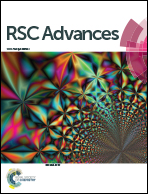Au-doped Li1.2Ni0.7Co0.1Mn0.2O2 electrospun nanofibers: synthesis and enhanced capacity retention performance for lithium-ion batteries
Abstract
The Au-doped Li1.2Ni0.7Co0.1Mn0.2O2 (Au = 0%, 1%, 2%, 3%, 4%) nanofibers are successfully prepared by electrospinning technology. The impact of Au doping on the structure, morphology and electrochemical properties of samples is studied in detail. The X-ray diffraction patterns demonstrate that appropriate Au-doping does not significantly change the structure of Li1.2Ni0.7Co0.1Mn0.2O2. Scanning electron microscope images revealed the electrospun nanofibers have uniform particle size in the range of 300–400 nm. The optimum doping amount of Au is 2% in Li1.2Ni0.7Co0.1Mn0.2O2 to obtain high discharge capacity and excellent capacity retention. Electrochemical impedance spectroscopy test results elucidated that the LNCMA-2% cell has excellent Li+ electrical conductivity and lower charge transfer resistance. The results show that stable structure with good particle contact of the Au-doped cathode materials can enhance electrochemical properties, which can be interpreted as an important inhibition of phase transitions and increased charge transfer impedance during cycling.



 Please wait while we load your content...
Please wait while we load your content...